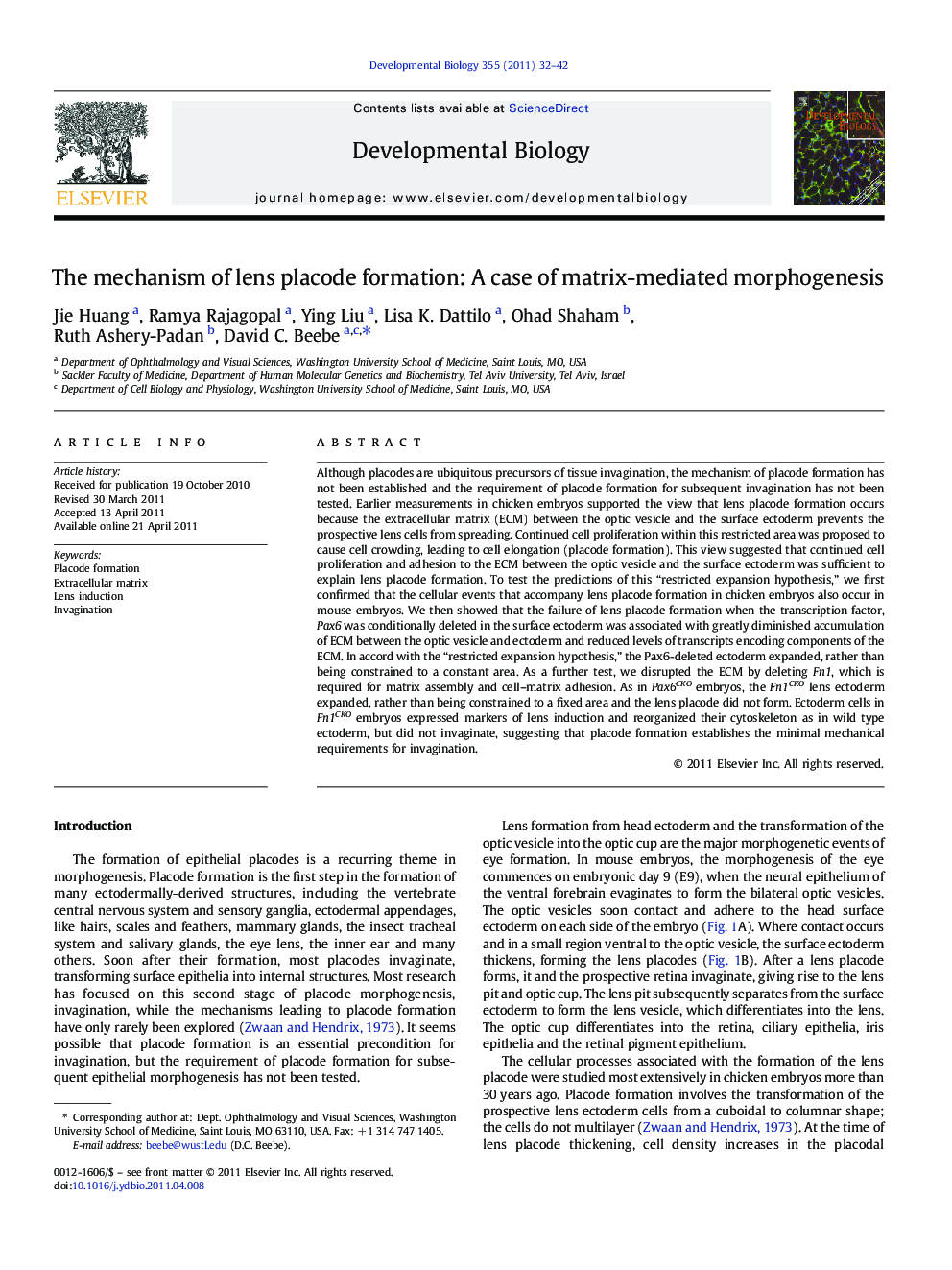| کد مقاله | کد نشریه | سال انتشار | مقاله انگلیسی | نسخه تمام متن |
|---|---|---|---|---|
| 2173710 | 1093742 | 2011 | 11 صفحه PDF | دانلود رایگان |

Although placodes are ubiquitous precursors of tissue invagination, the mechanism of placode formation has not been established and the requirement of placode formation for subsequent invagination has not been tested. Earlier measurements in chicken embryos supported the view that lens placode formation occurs because the extracellular matrix (ECM) between the optic vesicle and the surface ectoderm prevents the prospective lens cells from spreading. Continued cell proliferation within this restricted area was proposed to cause cell crowding, leading to cell elongation (placode formation). This view suggested that continued cell proliferation and adhesion to the ECM between the optic vesicle and the surface ectoderm was sufficient to explain lens placode formation. To test the predictions of this “restricted expansion hypothesis,” we first confirmed that the cellular events that accompany lens placode formation in chicken embryos also occur in mouse embryos. We then showed that the failure of lens placode formation when the transcription factor, Pax6 was conditionally deleted in the surface ectoderm was associated with greatly diminished accumulation of ECM between the optic vesicle and ectoderm and reduced levels of transcripts encoding components of the ECM. In accord with the “restricted expansion hypothesis,” the Pax6-deleted ectoderm expanded, rather than being constrained to a constant area. As a further test, we disrupted the ECM by deleting Fn1, which is required for matrix assembly and cell–matrix adhesion. As in Pax6CKO embryos, the Fn1CKO lens ectoderm expanded, rather than being constrained to a fixed area and the lens placode did not form. Ectoderm cells in Fn1CKO embryos expressed markers of lens induction and reorganized their cytoskeleton as in wild type ectoderm, but did not invaginate, suggesting that placode formation establishes the minimal mechanical requirements for invagination.
Figure optionsDownload high-quality image (117 K)Download as PowerPoint slideResearch Highlights
► Lens placode formation is associated with cell proliferation in a restricted area.
► Deletion of Pax6 permitted ectoderm expansion and prevented placode formation.
► Pax6 deletion decreased the expression of matrix components and ECM accumulation.
► Deletion of Fn1 permitted ectoderm expansion and prevented placode formation.
► Failure of placode formation prevented invagination to form the lens pit.
Journal: Developmental Biology - Volume 355, Issue 1, 1 July 2011, Pages 32–42